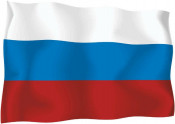
The Presidential Library marking the Day of the National Flag of the Russian Federation. How did Peter I comprehend the tricolour?
The Day of the National Flag of the Russian Federation is celebrated on August 22. The Presidential Library's electronic collections allow studying in detail one of the official symbols of Russia, exploring rare publications and audiovisual materials, which digital copies are available on the Library's portal. The documents are in one of the four basic collections – State Authority.
The necessity for a national flag, especially in the Navy, arose during the reign of Tsar Alexei Mikhailovich. It was time when the casual white-blue-red tricolour appeared. Gleb Kalashnikov, Executive Secretary of the Heraldic Council under the President of the Russian Federation and the host of the video lectures of the Presidential Library's regular series Knowledge of Russia, states: "Flags owe their birth to a new time, the development of navigation, and not just seafaring, but the appearance of large fleets. Fleets of great powers. An urgent task at sea was to determine whose ship was in front of you and what to do. Was it possible to attack, or, in contrast, you needed to get away as soon as possible? Was she a vessel of a neutral power and you could not approach, or your own ship, which required immediate assistance".
Gleb Kalashnikov emphasizes that at the beginning of his reign, Peter I strictly followed his father's customs: "When the Great Embassy went to Europe, he received a long detailed instruction on what he should do. The top ten topics (there were a total of almost 60 paragraphs) of the tasks to the Embassy was the purchase of white, blue and red worsted for naval standards".
However, some researchers consider that the emperor-reformer had other motives. Yevstafiy Voronets's book What Colours Are Established by History and Russian Laws for the Distinctive Russian All-estate and State Flag? (1892) reports: "The red, blue and white colours were the ancient state colours of Holland. Emperor Peter I, probably out of respect for Holland, where he and Russia acquired first knowledge of navigation, applied the colour of this country for the Russian trading and merchant ships".
Also, Peter I himself "drew a design" of the flag. The hand-written drawing by Tsar Peter is given in Pyotr Belavents's book Colours of the Russian State National Flag (1910), which digital copy is available on the Presidential Library' portal. Then the state flag changed several times. The documentary State Symbols of Russia. The Flag of Russia describes details of other versions of the banner. The film is available for viewing on the Presidential Library's portal.
In 1896, on the eve of the coronation of Nicholas II, the white, blue and red tricolour finally acquired the status of the only state flag of the Russian Empire. Pyotr Belavenets focuses on that: "It was the time when the three colours of a new national flag received an official interpretation. White symbolized freedom and independence; blue - the colour of the Mother of God, the patron saint of Russia; red meant great power".
After the revolution, in 1918, the white, blue and red tricolour was replaced. The country lived under the red Soviet banner until August 22, 1991, when an extraordinary session of the Supreme Soviet of the RSFSR decided to submit the tricolour as the official symbol of Russia. The tricolour flag was approved by the Federal Constitutional Law On National Flag of the Russian Federation on December 25, 2000. Along with the anthem and coat of arms, it belongs to the official symbols of the state.





